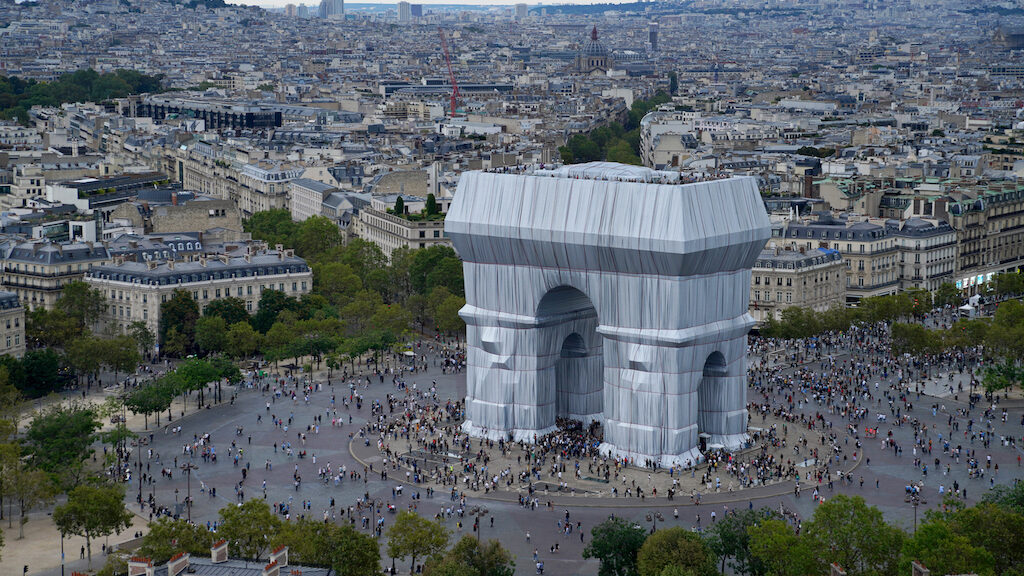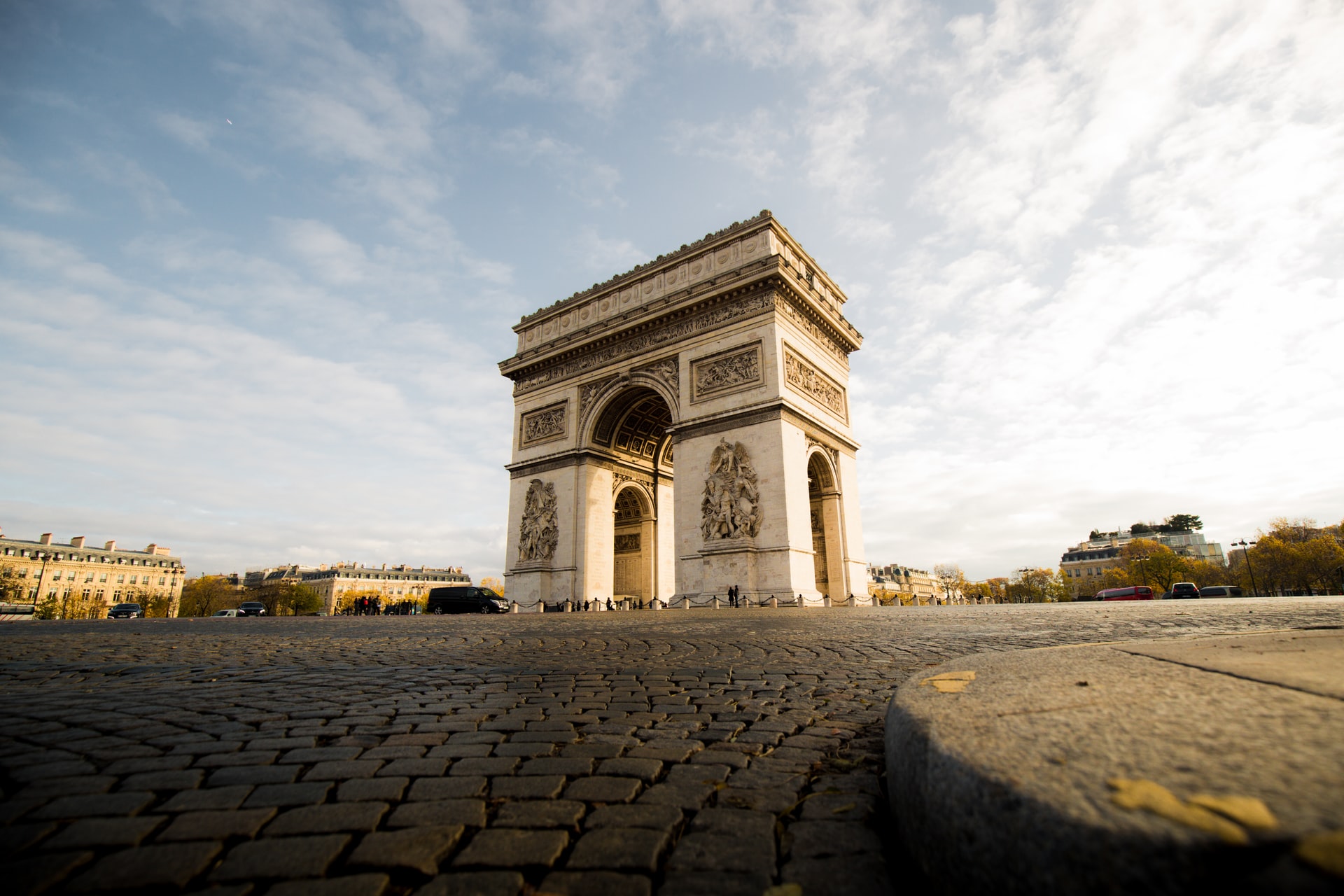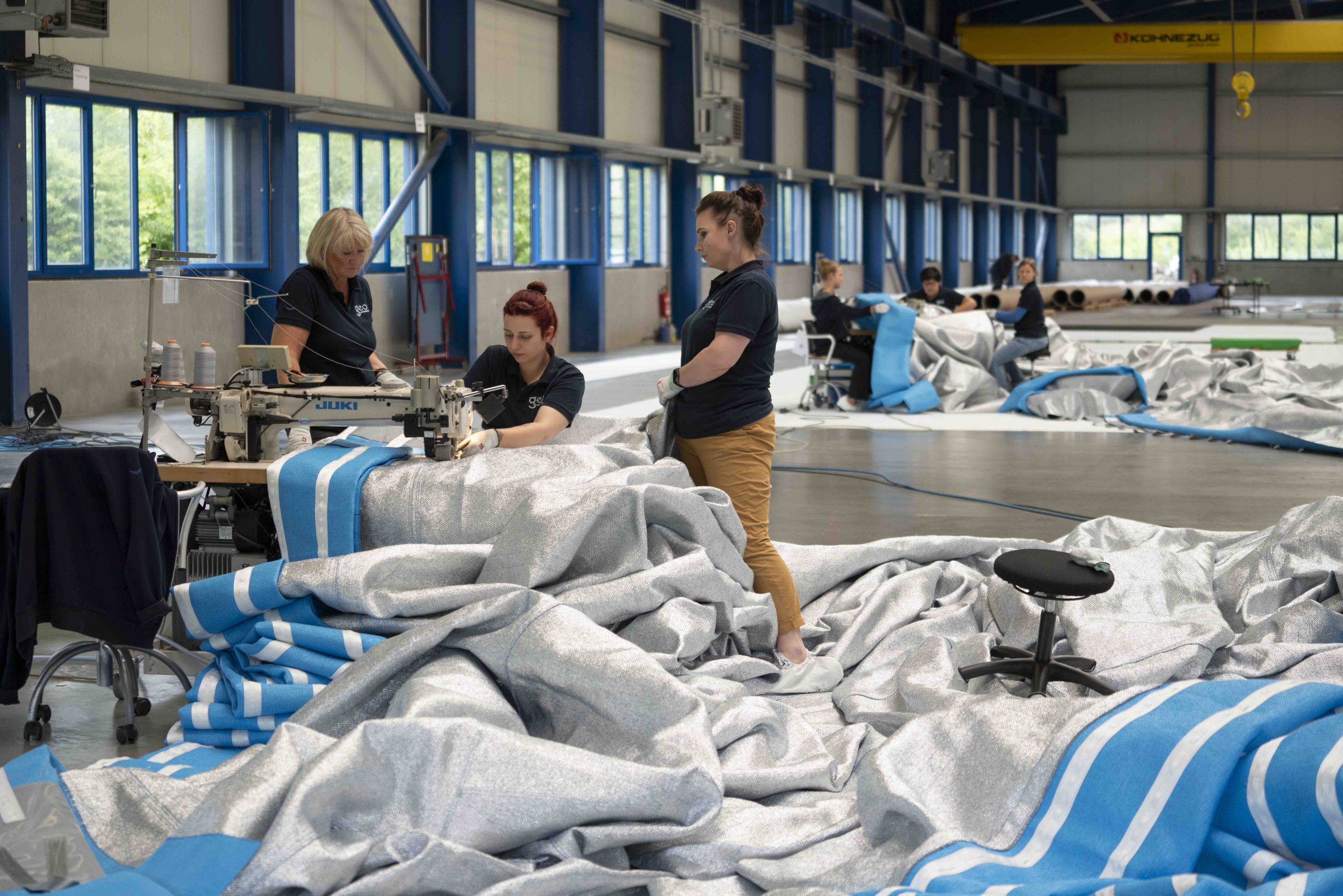Et voilà: L’Arc de Triomphe, Wrapped

It took 60 years of time, 14 million euros and a lot of German expertise to do it
Billboard
Skyscrapper
Halfpage
In the 1960s, the artist couple Christo and Jeanne-Claude first had the idea of wrapping the Arc de Triomphe in fabric. In autumn 2021, barely 1.5 years after Christo passed away, this dream became reality. All it took was an idea, 60 years of time, 14 million euros and 25.000 square meters of fabric. Also: a lot of German expertise.
“It will be like a living object that moves in the wind and reflects the light. With its moving folds, the surface of the monument will become sensual. People will want to touch the Arc de Triomphe.” – that’s what Christo predicted. And he was right.
Just to remind you, this is what the Arc de Triomphe in Paris usually looks like. Plus, a whole lot of tourists. But this autumn, for 16 days (from 18 September to 3 October 2021), it was only recognizable by its silhouette. (And by its unchanged location, but that’s just by the by.) For this period, the Arc de Triomphe disappeared behind in fabric – like numerous other buildings before it, including the German Reichstag. The Bulgarian artist Christo was responsible for this.
This is what the Arc de Triomphe looks like when it’s not part of an art installation by Christo. (Photo: canmandawe/Unsplash)

Medium Rectangle
Halfpage
L’Arc de Triomphe, Wrapped – from Christo’s vision to reality
Like so many things, the wrapping of the Arc de Triomphe was postponed by a year due to the Corona pandemic. Originally scheduled for autumn 2020, Christo announced via his social media channels in April 2020 that his team would not realize the labor-intensive art installation until next year. A few weeks after the announcement, Christo passed away shortly before his 85th birthday in May 2020. Unfortunately, this means he was unable to see the realization of his mega-project. Despite his death, plans to wrap the Arc de Triomphe went ahead. This was in accordance with Christo’s wishes, according to a statement published by his team on his Facebook page.
Christo and one of his many preparatory drawings of the Arc de Triomphe (Photo: Wolfgang Volz/Christo and Jeanne-Claude Foundation 2019)

This is because the project has been in the making for several years. The timeline goes back to 1961. After Christo, whose real name was Christo Vladimirov Javacheff, met his wife Jeanne-Claude Denat de Guillebon in Paris, the two began creating public art together. One of these projects was to wrap a public building. During this first creative phase in Paris, Christo lived in a room near the Arc de Triomphe. And the building fascinated him from that point on. Christo created the first photomontage showing a wrapped Arc de Triomphe as early as 1962, and since then has continued to create new collages and sketches of the project. Today, almost 60 years later, his vision has become reality.
With the permission of Emmanuel Macron
The trigger for this was the exhibition “Christo et Jeanne-Claude, Paris!”, which was to open at the Centre Pompidou in 2020. In 2017, in the midst of preparations for the exhibition, Christo, together with the president of the Centre Pompidou, Serge Lasvignes, and its director, Bernard Blistène, discussed realizing a parallel project. Christo decided to revive his vision for the Arc de Triomphe. A year later, the president of the Centre des monuments nationaux (the institution that manages the Arc de Triomphe), Philippe Bélaval, presented the project to French President Emmanuel Macron. A few months later, in January 2019, Macron and the Centre des monuments nationaux give their approval. The project could finally go into planning.
Et voilà: L’Arc de Triomphe, Wrapped.
Christo brought virtually exclusively German expertise on board for this. The Berlin office Schlaich Bergermann Partner prepared the technical studies for the project. Wacker Ingenieure from Birkenfeld were responsible for the wind tunnel tests. And the German company Setex Textil wove the fabric, after which ROWO Coating in Herbholzheim coated it with paint. Finally, the company Geo – Die Luftwerker sewed the fabric together into long panels. On top of that, another German company – Gleistein – produced the red ropes that fix the fabric panels to the Arc de Triomphe.
A German company sewed together the fabric panels for the wrapping of the Arc de Triomphe. (Photo: Wolfgang Volz/Christo and Jeanne-Claude Foundation 2020)

In addition to technical studies and wind tunnel tests, Christo and his team had to consider many other safety aspects. As a result, the wrapping did not take place in spring, as initially planned, but in autumn. In this way, Christo’s team complied with the request of the State Society for the Protection of Birds to protect the breeding season of the kestrels that live in the Arc de Triomphe. Steel cages around the sculptures on the pillars of the Arc de Triomphe ensure that they are not damaged by the tons of fabric. Similar constructions also keep the cornice and ornaments from being damaged.
Numerous fitters rolled the fabric panels around the Arc de Triomphe and fastened them with red rope. (Photo: Benjamin Loyseau/Christo and Jeanne-Claude Foundation 2021)

Medium Rectangle
Halfpage
After they had installed the protection, countless fitters installed a total of 25,000 square meters of fabric (a recyclable polypropylene fabric in silver blue, by the way). They tied it to the Arc de Triomphe with three kilometers of red rope – et voilà: L’Arc de Triomphe, Wrapped.
Christo, Jeanne-Claude and the Arc de Triomphe
This undertaking, which required so many years of planning, vast amounts of resources and testing (including several life-size wrapping tests and a wrapping training centre for the assemblers), as well as a huge team, was not cheap. It is said to have cost 14 million euros. However, these funds did not come from the public sector or from foundations. L’Arc de Triomphe, wrapped was financed entirely from Christo’s estate. Among other things, through the sale of his preparatory studies, drawings and collages as well as scale models of the project.
Christo and Jeanne-Claude were an artist couple who, from the 1960s onwards, attracted attention primarily with large-scale wrapping projects. In addition to covering buildings and other architectural structures (e.g., Reichstag Berlin, 1995; Pont-Neuf-Brücke Paris, 1985), they also realized large-scale projects in the landscape. These include the Surrounded Islands off Miami in 1983 and the Floating Piers in Italy in 2016. Jeanne-Claude died in New York in 2009. Christo continued to work as a solo artist from then on – always inspired by their joint work – until his death in 2020. After that his team took over to complete Christo’s work L’Arc de Triomphe, Wrapped.




















